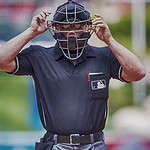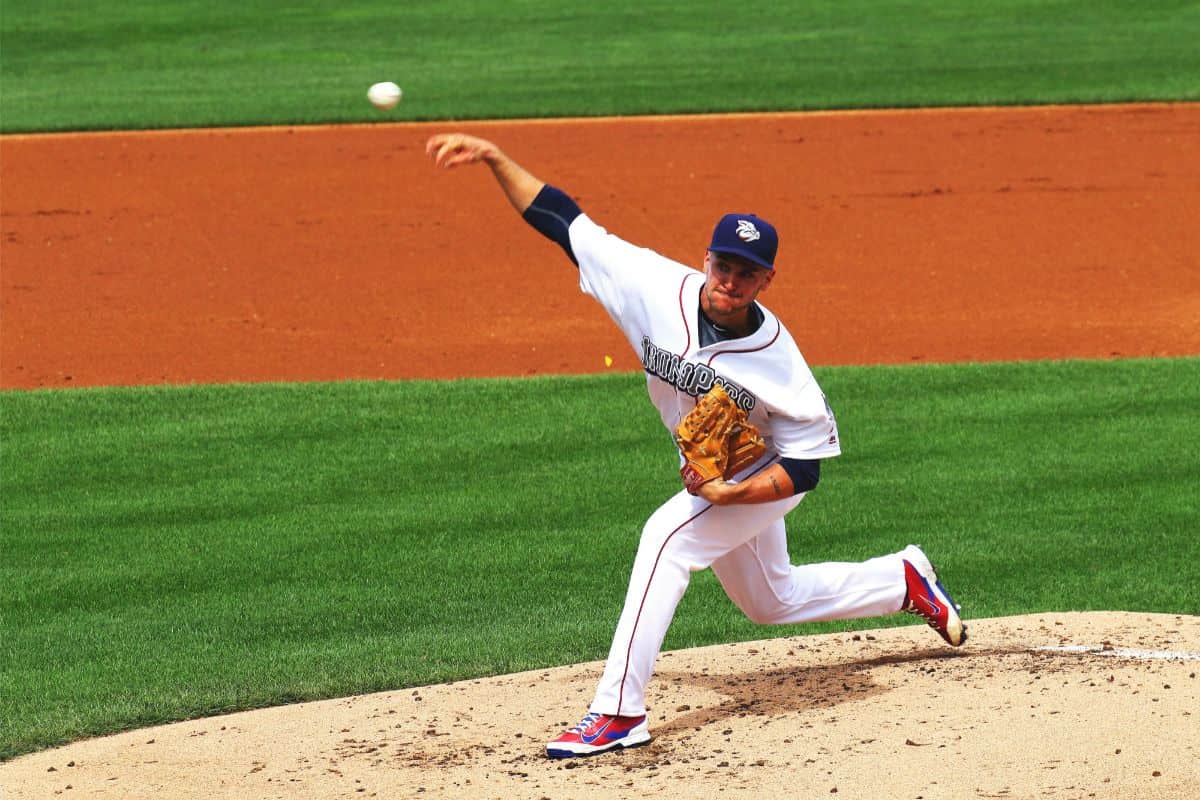A hold is a statistic in baseball that is used to measure the effectiveness of relief pitchers. It is awarded to a relief pitcher who enters the game in a save situation, records at least one out, and leaves the game without giving up the lead. The hold is a relatively new statistic, as it was first officially recognized by Major League Baseball in 1999.
The hold was created to recognize the contributions of relief pitchers who do not get credited with saves. It is a way to measure the success of a relief pitcher in helping to preserve a lead for their team. While saves are awarded to pitchers who finish the game and record the final out, holds are awarded to pitchers who come in and do their job in the middle innings. The hold is not as well-known as the save, but it is an important statistic that helps to highlight the value of good relief pitching.

What is a Hold in Baseball?
Definition
A hold is a statistic that is used to measure the effectiveness of relief pitchers in baseball. It is awarded to a relief pitcher who enters the game in a save situation, records at least one out, and leaves the game without giving up the lead. A save situation is defined as a game where the pitcher enters with a lead of no more than three runs, or with the tying run on base, at bat, or on deck.
Criteria for a Hold
To be credited with a hold, a pitcher must meet the following criteria:
- Enter the game in a save situation
- Record at least one out
- Leave the game without giving up the lead
It is important to note that a pitcher can earn a hold even if he gives up runs, as long as his team maintains the lead. However, if the pitcher blows the lead and the game is tied or his team is losing when he leaves the game, he cannot earn a hold.
Holds are typically recorded by the official scorer of the game and are often used to evaluate the performance of a team’s bullpen. A high number of holds can indicate that a team has a strong bullpen with reliable relief pitchers.
In conclusion, a hold is a statistic used to measure the effectiveness of relief pitchers in baseball. It is awarded to a pitcher who enters the game in a save situation, records at least one out, and leaves the game without giving up the lead.
How is a Hold Recorded?
Official MLB Statistic
A hold is an official statistic tracked by Major League Baseball (MLB) to recognize relief pitchers who preserve a lead for their team. It is recorded as a statistic in the same manner as saves and wins.

Eligibility
To be eligible for a hold, a relief pitcher must meet the following criteria:
- The pitcher must enter the game in a save situation, meaning they come in with their team leading by three runs or fewer.
- The pitcher must not be the winning pitcher of record.
- The pitcher must pitch at least one inning.
- The pitcher must leave the game with a lead intact.
Crediting a Hold
A hold is credited to a relief pitcher who meets the eligibility requirements and successfully maintains the lead until the end of the game. If the pitcher allows the tying or go-ahead run to score, they are not credited with a hold, even if their team eventually wins the game.
In addition, a pitcher can receive multiple holds in a single game if they meet the eligibility requirements and pitch effectively in multiple innings.
To summarize, a hold is an official statistic tracked by MLB to recognize relief pitchers who preserve a lead for their team. Relief pitchers must meet specific eligibility requirements to be credited with a hold, and they must maintain the lead until the end of the game.
Holds vs. Saves
Difference
Holds and saves are two statistical categories used to measure the success of relief pitchers in baseball. While they share some similarities, they are fundamentally different.
A hold is awarded to a relief pitcher who enters a game in a save situation, records at least one out, and leaves the game without giving up the lead. A save is awarded to a pitcher who finishes a game for the winning team, and meets certain conditions, such as entering the game with a lead of no more than three runs, and finishing the game without giving up the lead.
The main difference between holds and saves is that a hold can be awarded to any relief pitcher who meets the criteria, regardless of whether their team wins or not. A save, on the other hand, can only be awarded to the pitcher who finishes the game for the winning team.
Similarities
Despite their differences, holds and saves share some similarities. Both categories are used to measure the effectiveness of relief pitchers, and both are important in determining a pitcher’s overall value to their team.
In addition, both holds and saves are typically earned by closers, who are relief pitchers who specialize in pitching the final inning (or innings) of a game. Closers are often the most highly paid and highly valued relief pitchers on a team, and they are expected to be able to consistently earn saves and holds.

Conclusion
In conclusion, while holds and saves share some similarities, they are fundamentally different. A hold is awarded to a relief pitcher who enters a game in a save situation, records at least one out, and leaves the game without giving up the lead. A save, on the other hand, is awarded to the pitcher who finishes the game for the winning team. Both categories are important in measuring the effectiveness of relief pitchers, and are typically earned by closers.
Effectiveness of a Hold
Valued in Baseball Statistics
A hold is a statistic in baseball that is awarded to a relief pitcher who enters a game with his team in the lead, records at least one out, and leaves the game without relinquishing that lead. Although not as widely recognized as saves, holds are still considered to be an important measure of a relief pitcher’s effectiveness.
In baseball statistics, a hold is credited to a pitcher who has kept the lead for his team while not recording a save. This statistic is often used as an indicator of a relief pitcher’s ability to protect a lead and help his team win the game.
Measures of Effectiveness
There are several measures of effectiveness that are used to evaluate a relief pitcher’s performance, including wins, losses, earned run average (ERA), double plays, strikeouts, and holds. While holds are not as widely recognized as other statistics, they are still considered to be an important measure of a relief pitcher’s effectiveness.
According to baseball-reference.com, the single-season record for holds is 40, set by Luke Gregerson in 2010. The all-time career leader in holds is Mike Stanton, with 266.
Holds are often used in conjunction with other baseball statistics to evaluate a relief pitcher’s effectiveness. For example, a pitcher with a high number of holds and a low ERA is considered to be a more effective reliever than a pitcher with a high number of holds and a high ERA.
In conclusion, while not as widely recognized as saves, holds are still considered to be an important measure of a relief pitcher’s effectiveness in baseball. They are often used in conjunction with other baseball statistics to evaluate a relief pitcher’s performance, and can provide valuable insight into a pitcher’s ability to protect a lead and help his team win the game.
Famous Holders
In baseball, a hold is a statistic credited to a relief pitcher who enters the game in a save situation, records at least one out, and leaves the game without having given up the lead. Here are some of the most famous holders in baseball history:
Arthur Rhodes
Arthur Rhodes, a left-handed pitcher, played for nine different teams over his 20-year career in the MLB. He recorded 37 holds in the 2001 season alone, which was a record at the time. Rhodes was known for his ability to get left-handed batters out and was often used in late-inning situations to get crucial outs.
Tony Watson
Tony Watson, a left-handed pitcher, has played for the Pittsburgh Pirates, Los Angeles Dodgers, San Francisco Giants, and Philadelphia Phillies over his career. He has recorded over 200 holds and was a key member of the Pirates’ bullpen during their successful playoff runs in 2013 and 2014.
Mike Stanton
Mike Stanton, a left-handed pitcher, played for the Atlanta Braves, Boston Red Sox, New York Yankees, and Washington Nationals over his career. He was a reliable setup man and recorded over 250 holds. Stanton was also a two-time All-Star and won three World Series championships with the Yankees.
LaTroy Hawkins
LaTroy Hawkins, a right-handed pitcher, played for 11 different teams over his 21-year career in the MLB. He recorded over 100 holds and was known for his durability and consistency. Hawkins was also a mentor to many young pitchers and was respected throughout the league for his leadership.
Alan Embree
Alan Embree, a left-handed pitcher, played for 10 different teams over his 16-year career in the MLB. He recorded over 200 holds and was a key member of the Boston Red Sox bullpen during their 2004 World Series championship run. Embree was also known for his ability to get tough left-handed hitters out.
Jesse Orosco
Jesse Orosco, a left-handed pitcher, played for 11 different teams over his 24-year career in the MLB. He recorded over 100 holds and was a key member of the New York Mets bullpen during their 1986 World Series championship run. Orosco was also known for his durability and longevity, as he pitched until he was 46 years old.
Overall, these famous holders were crucial members of their respective teams and helped their clubs win many games. Their ability to get crucial outs in late-inning situations was invaluable, and their contributions to the game of baseball will not be forgotten.
Conclusion
In conclusion, a hold is a statistic that measures the effectiveness of a relief pitcher in preserving a lead for the team. It is a relatively new statistic that was introduced in the 1980s, and it has become an important part of modern baseball analytics.
A hold is credited to a relief pitcher who enters the game in a save situation, records at least one out, and leaves the game without giving up the lead. The pitcher does not have to finish the game, and he does not have to earn a save to get a hold.
While holds are not as well-known as saves, they are still an important measure of a relief pitcher’s performance. They reward pitchers who come into the game in difficult situations and help their team win. However, they are not without controversy, as some critics argue that they are too dependent on the performance of the starting pitcher and the defense.
Overall, holds are a useful statistic for baseball fans and analysts who want to understand the impact of relief pitchers on the game. They provide a way to measure the contributions of these players and to compare their performance across different teams and seasons.
- Fenway Park Seating Chart: Best Seats To See the Red Sox - July 17, 2023
- What is RBI in Baseball: A Simple Explanation of The “Ribby” - July 3, 2023
- What is DFA in Baseball? A Term No Player Wants to Hear - July 3, 2023








